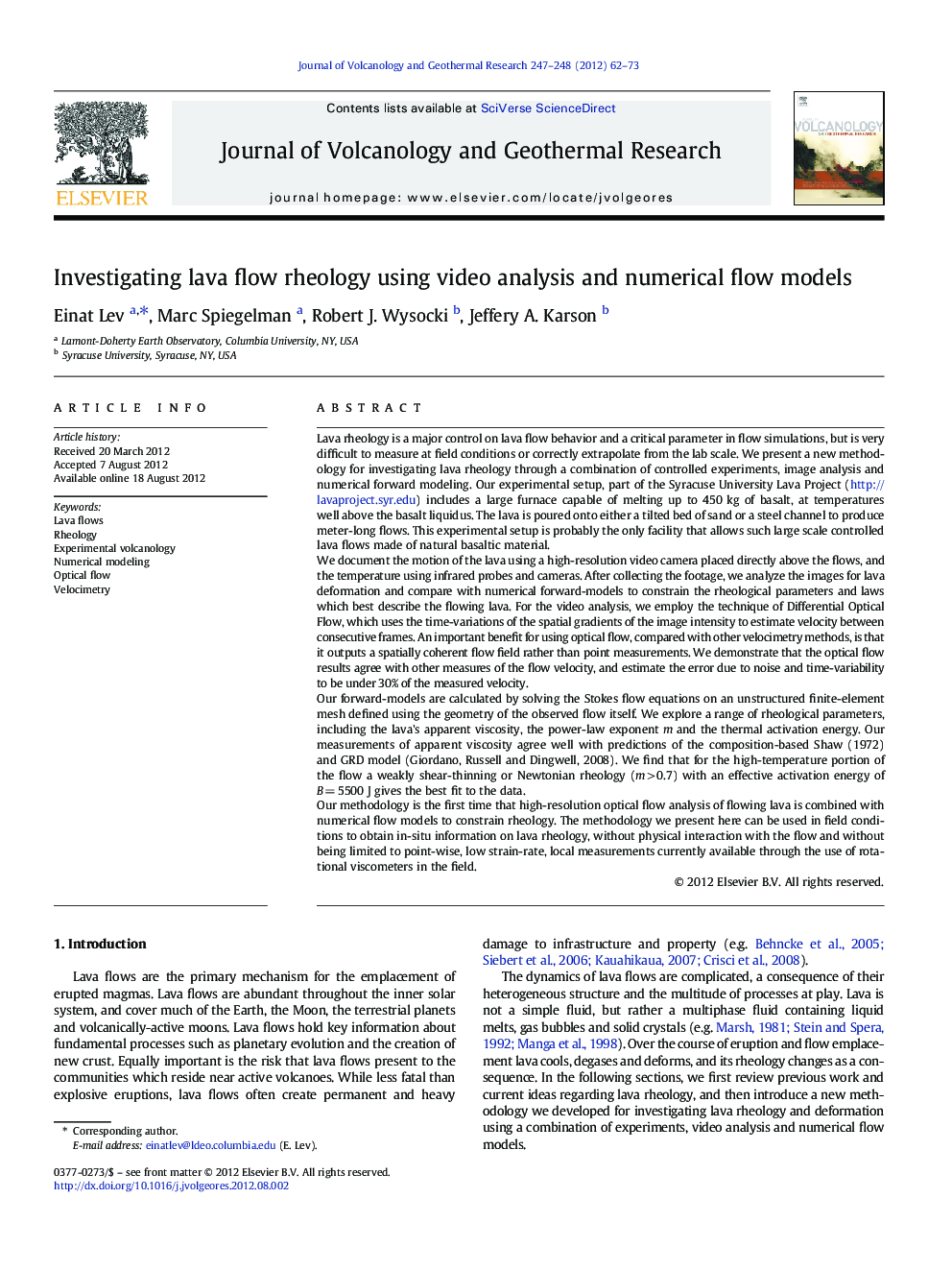| کد مقاله | کد نشریه | سال انتشار | مقاله انگلیسی | نسخه تمام متن |
|---|---|---|---|---|
| 4713663 | 1638373 | 2012 | 12 صفحه PDF | دانلود رایگان |

Lava rheology is a major control on lava flow behavior and a critical parameter in flow simulations, but is very difficult to measure at field conditions or correctly extrapolate from the lab scale. We present a new methodology for investigating lava rheology through a combination of controlled experiments, image analysis and numerical forward modeling. Our experimental setup, part of the Syracuse University Lava Project (http://lavaproject.syr.edu) includes a large furnace capable of melting up to 450 kg of basalt, at temperatures well above the basalt liquidus. The lava is poured onto either a tilted bed of sand or a steel channel to produce meter-long flows. This experimental setup is probably the only facility that allows such large scale controlled lava flows made of natural basaltic material.We document the motion of the lava using a high-resolution video camera placed directly above the flows, and the temperature using infrared probes and cameras. After collecting the footage, we analyze the images for lava deformation and compare with numerical forward-models to constrain the rheological parameters and laws which best describe the flowing lava. For the video analysis, we employ the technique of Differential Optical Flow, which uses the time-variations of the spatial gradients of the image intensity to estimate velocity between consecutive frames. An important benefit for using optical flow, compared with other velocimetry methods, is that it outputs a spatially coherent flow field rather than point measurements. We demonstrate that the optical flow results agree with other measures of the flow velocity, and estimate the error due to noise and time-variability to be under 30% of the measured velocity.Our forward-models are calculated by solving the Stokes flow equations on an unstructured finite-element mesh defined using the geometry of the observed flow itself. We explore a range of rheological parameters, including the lava's apparent viscosity, the power-law exponent m and the thermal activation energy. Our measurements of apparent viscosity agree well with predictions of the composition-based Shaw (1972) and GRD model (Giordano, Russell and Dingwell, 2008). We find that for the high-temperature portion of the flow a weakly shear-thinning or Newtonian rheology (m > 0.7) with an effective activation energy of B = 5500 J gives the best fit to the data.Our methodology is the first time that high-resolution optical flow analysis of flowing lava is combined with numerical flow models to constrain rheology. The methodology we present here can be used in field conditions to obtain in-situ information on lava rheology, without physical interaction with the flow and without being limited to point-wise, low strain-rate, local measurements currently available through the use of rotational viscometers in the field.
► A new experimental setup can produce large lava flows from natural source rock.
► Optical Flow (OF) algorithms applied to HD video gave detailed lava velocity fields.
► Flow models combined with lava velocities produce realistic estimates of viscosity.
► Results confirm that lava is a weakly shear-thinning or Newtonian.
► Results from OF + modeling agree with composition-based predictions.
Journal: Journal of Volcanology and Geothermal Research - Volumes 247–248, 1 December 2012, Pages 62–73